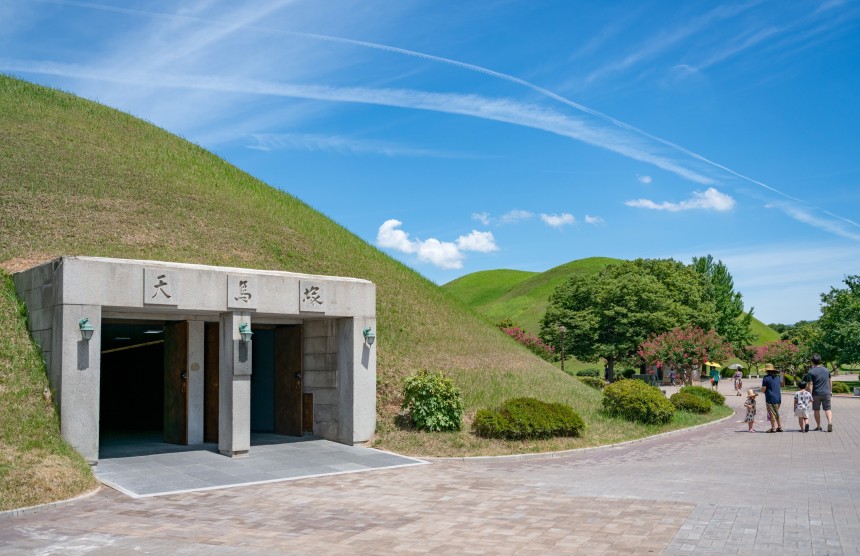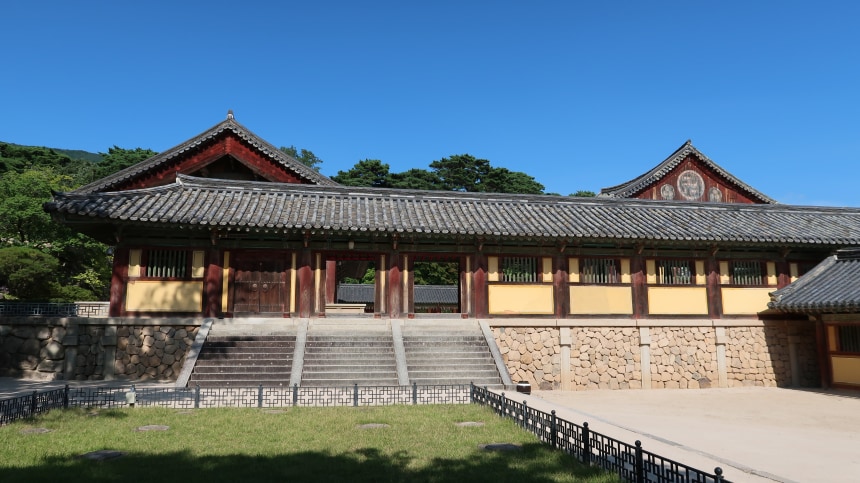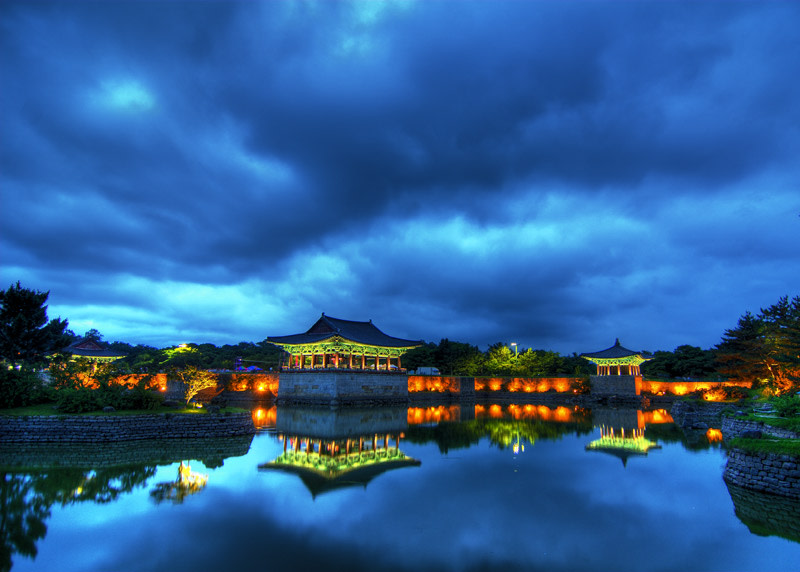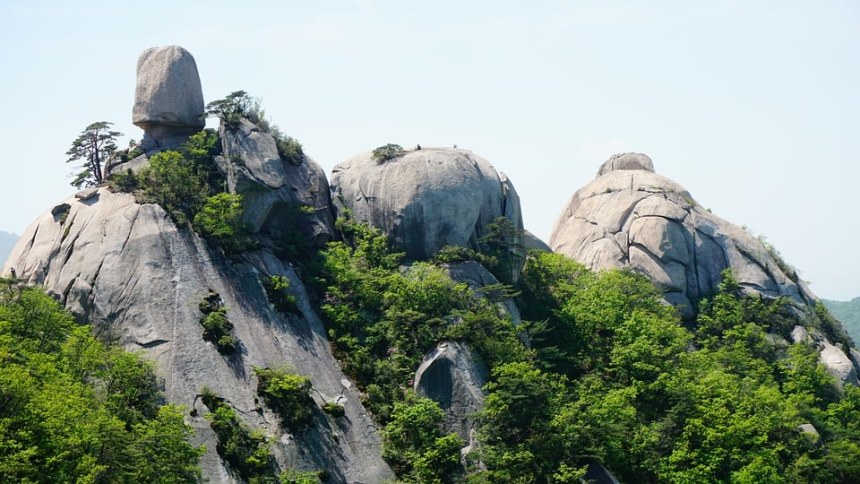| 6 mins read
Ross Cameron
Known as a ‘museum without walls’, Gyeongju is the go-to destination in South Korea for those wanting to explore the country’s jaw-dropping history and vibrant culture. Indeed, the city probably has more ancient tombs, medieval fortifications, Buddhist temples and world-class museums than the rest of the country combined, which makes it an ideal place to base yourself for a tour of South Korea. However, as there is so much to do, this Gyeongju bucket list will show you the best things to do and places to visit in this spectacular ancient city. A knowledgeable Gyeongju tour guide will, of course, add in-depth understanding to these cultural gems.
Stroll amongst ancient tombs at Tumuli-gongwon
In the heart of Gyeongju, where most South Korean cities would have a clutch of glistening skyscrapers, is a large grassy park peppered with 23 knolls. Many visitors at first mistake these odd-shaped mounds for a strange geological feature of the area before realising that they are the tombs of the Silla Dynasty, who ruled Korea from Gyeongju throughout the 1st millennia AD. Erected to mimic the shape of the mountains that surround the city, the tumuli are one of South Korea’s most unusual attractions. Only one tomb, that of Cheonmachong, is open for tourists to explore and was built at the tail end of the 5th century when the Silla were at the height of their power. Within the tomb are replicas of the weaponry and jewellery that was found in the tomb – the originals are now safely part of the collection at Gyeongju National Museum. Guided tours of Tumuli-gongwon are available.
Marvel at the jewel of Silla architecture at Bulguk-sa
Just beyond Gyeongju’s southwestern suburbs is Bulguk-sa, the crowning accomplishment of Silla architecture. Spread over 16 stone terraces, this vast UNESCO listed Buddhist temple is surrounded by centuries-old pine trees, placid lakes and landscaped gardens that make for an enchanting experience. Highlights of this otherworldly complex include the Daeungjeon Hall, which was rebuilt following Japanese destruction in 1765, and the various stepped bridges with each step representing a step towards enlightenment. As Bulguk-sa is outwith Gyeongju, the best way to get to the complex is via guided tours that depart from the city centre. These have the added benefit of giving you the unrivalled insights of local guides.
Enter the Buddha’s grotto at Seokguram
Perched high above Bulguk-sa (dual tickets can be purchased) is Seokguram, a UNESCO listed Buddhist grotto that contains one of East Asia’s most astounding works of religious art. Amongst the cave's stalagmites and stalactites is a mammoth Buddha statue, which is guarded by numerous statues of lesser deities. While the Buddha is now protected behind a pane of glass, the set-up of Seokguram remains enthralling – especially on a clear day when its hilltop position provides uninterrupted views of the East Sea. To get there, you can take a scenic hike from Bulguk-sa or catch one of the regular shuttle buses.
Explore Silla history at Gyeongju National Museum
Gyeongju National Museum is probably South Korea’s finest museum. If you are short on time in the city and want to walk through Silla history all under one roof or simply want to get a better grip on the dynasty’s long period in power, then this museum is a must-visit attraction. The highlight is undoubtedly the Main Archaeological Hall, where numerous standout artefacts are housed. These include a 5th-century golden crown that easily surpasses anything many in the Western world during that same time period. Make sure to also marvel at the Emile Bell, which is one of the world’s largest and is rumoured to have a ring that can be heard 3 kilometres away.
See Anapji Pond, Gyeongju’s most romantic spot, at sunset
These days Anapji Pond is famed across South Korea has a popular destination for newlyweds to take romantic photographs against a backdrop of lily pads, ancient fortifications and sunset drenched mountains. Indeed, the ponds are without a doubt Gyeongju’s most romantic spot. However, in the days of the Silla Dynasty, the pond was constructed to commemorate their unification of the peninsula and the East Palace, most of which have long since been destroyed, was located there. While there is little to see today bar couples in love, the area still has an overwhelming sense of history that makes it a must-visit attraction in Gyeongju.
See Silla tombs in a shopping mall
While much of Gyeongju’s heritage has been immaculately preserved, one of the most unusual planning decisions made by the city has been to surround the Noseo-dong tombs and Bonghwangdae with shopping malls. Despite this, these are some of the city’s most impressive Silla era tombs are the contrast between the old and the new does make for a fantastic photo opportunity. The Noseo-dong tombs were both built between the 4th and 5th centuries and during their excavation, some of the Gyeongju National Museum’s most famed artefacts were recovered. On the other hand, Bonghwangdae is the largest Silla tomb and reaches a height of 22 metres, which does not include the gigantic tree that sprouts out its top.
Climb to the Bokdu-am Hermitage
The Bokdu-am Hermitage is one of Gyeongju’s most underrated attractions. Perched high atop the Obong-san Mountain, the climb to get to this excellent example of Silla era art is strenuous and will leave even the fittest visitor out of breath by the time they reach the summit. However, the pay off is without a doubt worth it. On a huge rock face, the figure of Buddha has been carved and is flanked by images of lesser deities and monks who have reached Nirvana. Even if the artwork does not pique your interest, the view from the top is well worth the hike alone.
“Over the past decade, Ross Cameron has travelled extensively across Europe, Southeast Asia, North America, North Africa, and the post-Soviet space. As someone who has areal passion for these regions of the globe, he is able to offer an expert opinion that highlights the best off the beaten track destinations.”
Image details and licenses: Cheonmachong: https://flic.kr/p/2bBZvSm (xiquinhosilva, CC BY 2.0), Bulguk-sa: https://flic.kr/p/27e99aS (breton owl, CC BY-NC 2.0), Seokguram: https://flic.kr/p/nZW8i (riNux, CC BY-SA 2.0), The Golden crown at Gyeongju National Museum: https://flic.kr/p/2byUgds (xiquinhosilva, CC BY 2.0), Anapji pond: https://flic.kr/p/2pDKwJ (Jason Teale, CC Y-ND 2.0)







